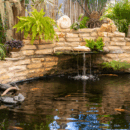Choosing The Right Parquet Flooring
The parquet is traditional and old flooring. It is extremely popular for its natural side and for its rustic appearance. Parquet, thanks to its woody composition, also has a particular smell that recalls homeowners of the trees and forests. Create a relaxing and cocooning atmosphere at home with this flooring material.
What Is Parquet Flooring?
A wooden floor covering, or a wood-based floor covering, the initial layer of the flooring has a minimum thickness of 2.5 mm. This material is called “parquet”.
A distinction is made between solid parquet, which must have a minimum thickness of between 20 and 23 mm, and engineered parquet, made up of 2 or 3 layers of wood.To find out more about parquet flooring, you can visit Homees.co at https://homees.co/articles/all-about-parquet-flooring to find out more.
Solid parquet
The solid parquet is designed in a single wooden frieze. It is available in traditional widths of 70 or 90 mm and in large widths: 140, 170 mm and more. Solid parquet is available either rough planed, pre-sanded, or factory finished – varnished or oiled (with or without special preparation) brushed, aged, stained etc. Solid parquet is a sustainable investment for the living room designs. It is possible to renovate it several times, and even “remodel” it to follow current trends.
Engineered parquet
The parquet is parquet reconstituted in 2 or 3 layers of wood each contributing its features:
- The facing / Wear layer
- The soul / the heart of the product
- Counter-facing / Counter-balancing
The initial material texture is made of noble wood, which gives your plank its appearance. Whether it is “single-plank” or “multi-ply” (the freeze is a plank machined from a parquet strip), it is usually sold with a vitrified finish. Its industrial manufacturing process allows it to be malleable and shaped in many colors, and variations. In general, it is designed as a quick and economical installation option.
The thickness of the “wear layer” must be at least 2.5 mm. A thickness of 3.4 mm is a standard in the profession. Renovation is possible up to a maximum of 6 times, depending on the sanding.
The choice of wood for parquet
The difference in price and appearance between one floor and another depends on the choice of wood. You chosen between a light and homogeneous wood with a few small knots, or one with wood of various colors with knots measuring up to 25 mm.The latter options offers a more natural style. But for a more rustic decor, it is better to choose a variant of wood with a strong contrast, with knots measuring up to 35 mm. You can also choose sapwood. Black knots accentuate the authenticity of your parquet.
The resistance of parquet floors to light:
Wood exposed to the sun is commonly subjected to color variations. Thus, a carpet, placed on the parquet exposed to the light (through a window opening) will cause a different shade of brown to appear.
The discolouration will create two shades of brown, one underneath the carpet, and the other shade on the uncovered area of the flooring. Word of caution: you must prevent this as this phenomenon is irreversible.















